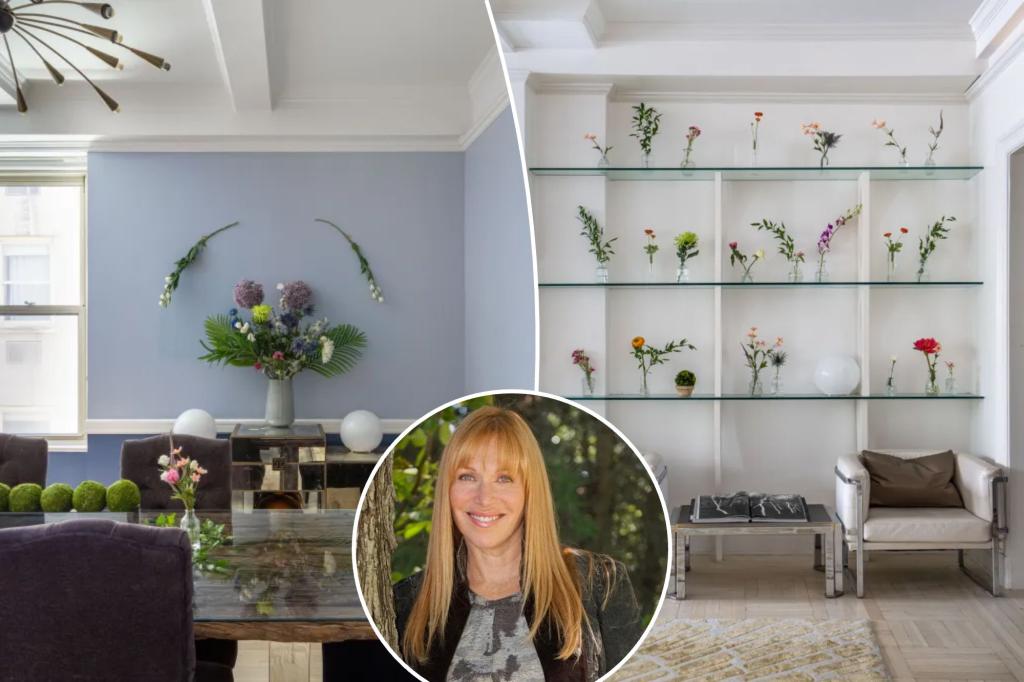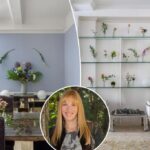This secret ‘flower power’ hack helps agents sell luxury apartments

In the world of high-end real estate, success often comes down to the smallest details. Beyond sleek architecture and panoramic skyline views, what truly seals the deal might surprise you: flowers. According to luxury real estate insiders, carefully curated floral arrangements have become a secret marketing weapon, transforming properties from impressive to irresistible.
- The best new and updated hotels in Miami for 2024
- Mikimoto x Chrome Hearts collaboration, Remedy Place in Soho, more NYC events
- The Best Luxury Beauty, Fragrance and Makeup Gifts for 2025
- 15 gourmet gifts for food holidays in 2025
- Exclusive | NBA star Kyle Kuzma on fashion, Art Basel and dating model Winnie Harlow
Known among top brokers as the “flower power” effect, this subtle yet powerful design strategy leverages the psychology of beauty, scent, and emotion to create a sense of warmth and exclusivity. In 2025’s ultra-competitive luxury housing market, where every showing counts, flowers are no longer just decoration—they’re a sophisticated sales tool.
Development
Elite agents in cities like New York, Los Angeles, and Miami are increasingly partnering with floral designers to stage homes for high-net-worth buyers. These aren’t your typical bouquets from the corner market. Instead, they’re custom arrangements strategically designed to complement the property’s architecture, lighting, and overall mood.
- Exclusive | ‘Luanes’ star Genesis Rodriguez in her favorite bag, bikini and coffee
- The 15 best luxury home and design gifts for 2024
- Exclusive | NBA star Kyle Kuzma on fashion, Art Basel and dating model Winnie Harlow
- Bold and Regal Jewelry for the 2025 Holiday Season
- Four Seasons New York Returns, Etēline in Chelsea, More NYC Events
Floral stylist Marissa Kent, who has worked on multimillion-dollar listings in Manhattan’s Tribeca and Upper East Side, explains the science behind the trend: “Flowers trigger an emotional response almost instantly. They signal freshness, vitality, and care—qualities that subconsciously make a space feel alive and well maintained.”
In a recent case study by Luxury Property Weekly, brokers reported that apartments staged with fresh, high-end floral designs sold 18% faster on average than those without them. Moreover, buyers perceived the properties as more luxurious and move-in ready, even when the decor remained unchanged.
The secret lies in intentional placement and emotional harmony. For instance, lush arrangements of white orchids or pale peonies in the living room evoke sophistication and serenity, while vibrant hydrangeas or tulips in the kitchen create warmth and approachability. Designers often align flower colors with the apartment’s palette—neutral blooms for minimalist penthouses, tropical tones for coastal estates, and dramatic roses for art-filled lofts.
Another critical element is scent. Studies show that subtle natural fragrances can elevate mood and influence perception of space. Real estate professionals avoid overpowering floral aromas, instead opting for clean, soft scents like gardenia, lily, or eucalyptus that suggest freshness without distraction. “Smell is the sense most closely tied to memory,” says Kent. “If a potential buyer leaves with a positive sensory imprint, they’re far more likely to envision living there.”
Top agents also use flowers to direct visual flow during property tours. A burst of color in the entryway immediately draws the eye, while smaller arrangements in the bathroom or bedroom guide movement through the home naturally. The result is a curated sensory journey—one that feels organic yet intentional.
Luxury developers have even begun incorporating floral design into their sales strategies from the earliest stages. In New York’s Hudson Yards, for example, certain model residences now feature seasonal floral installations designed by boutique studios. The goal is to evoke a “lived-in elegance” that photographs beautifully for listings and social media.
Interestingly, the trend is also shaping online marketing. With virtual tours and digital showings becoming standard, flowers add depth and relatability to otherwise sterile digital spaces. The pop of natural color provides contrast against metallic finishes and neutral interiors, making properties stand out in scrolling feeds.
High-profile broker James Fallon of Douglas Elliman notes that the floral effect extends beyond aesthetics. “Luxury buyers are emotionally driven,” he explains. “They’re not just purchasing square footage—they’re buying a feeling. Flowers create that feeling instantly.”
Florists catering to real estate clients often work on tight timelines, refreshing arrangements before every showing or open house. Costs can range from $500 for simple accents to over $10,000 for elaborate installations in penthouses or model homes. Yet agents see the investment as minimal compared to the potential return. “If a few thousand dollars in flowers helps sell a $10 million apartment, that’s the best ROI you can ask for,” Fallon adds.
Beyond residential listings, commercial developers are adopting the same principle. Luxury hotels, private clubs, and high-end office spaces increasingly use floral design to communicate brand identity and emotional tone. The “flower power” philosophy underscores how sensory psychology—sight, scent, and even texture—plays an essential role in modern luxury marketing.
As the 2025 real estate market evolves, the practice is expanding into eco-conscious territory. Sustainable florists are gaining traction, offering locally sourced blooms and reusable arrangements that align with green building certifications. This shift appeals to environmentally aware buyers who value both aesthetics and ethics.
Ultimately, flowers have become more than just finishing touches—they are an invisible language of emotion, aspiration, and connection. Whether it’s a delicate orchid on a marble countertop or a towering bouquet of roses in the foyer, the right arrangement can make potential buyers stop, breathe, and imagine themselves at home.
FAQ – Frequently Asked Questions
- What is the “flower power” hack in real estate?
It’s the strategic use of floral arrangements to enhance a property’s emotional appeal, helping agents sell luxury apartments faster. - Do flowers really influence buyers’ decisions?
Yes. Studies show that natural elements like flowers trigger positive emotions, making buyers perceive spaces as fresher, warmer, and more luxurious. - What types of flowers work best for home staging?
Orchids, peonies, hydrangeas, tulips, and roses are popular for their elegance and longevity. The choice depends on the property’s aesthetic. - How often should flowers be refreshed during showings?
Ideally, arrangements are replaced or maintained every 3–5 days to ensure freshness and consistent visual appeal. - Are there particular colors that sell better?
Neutral or white flowers suggest sophistication, while subtle color pops in common areas create warmth and visual interest. - Is this technique expensive to implement?
Costs vary but are generally modest compared to staging or marketing expenses, often yielding significant returns on investment. - Can flowers make a difference in virtual tours?
Absolutely. Flowers add life, contrast, and relatability to digital spaces, making them stand out in online listings. - Do floral scents matter in staging?
Yes. Subtle fragrances enhance ambiance without overwhelming visitors, helping create lasting emotional impressions. - How does this trend fit with sustainability?
Eco-friendly florists now use locally grown or preserved flowers, reducing waste and supporting sustainable luxury practices. - Will the “flower power” trend last?
Experts believe so. As emotional marketing becomes central to real estate, sensory design elements like flowers will continue to influence high-end sales.
Conclusion
In luxury real estate, emotion sells—and nothing evokes emotion quite like nature’s most elegant creation. The “flower power” hack exemplifies how subtle sensory cues can transform perception and value, turning cold spaces into inviting sanctuaries.
From penthouse terraces in Manhattan to beachfront estates in Malibu, real estate professionals are discovering that the path to a buyer’s heart—and signature—may just begin with a bloom. As markets grow more competitive, one thing is certain: luxury isn’t only about what buyers see; it’s about what they feel.

